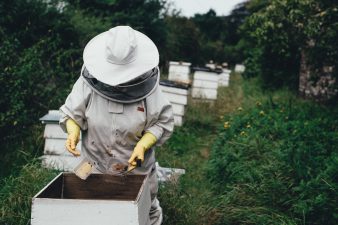 Plants to restore the Carmel forest by planting new trees are misguided, according to a leading researcher.
Plants to restore the Carmel forest by planting new trees are misguided, according to a leading researcher.
Rushing to the scene of the recent Carmel fire to plant a pile of trees would be a mistake, according to a leading researcher from Israel’s University of Haifa. While Professor Ido Izhaki recognizes the unfortunate toll that the Carmel fire took on human life, and that human factors have contributed to making the forest more vulnerable, the Mediterranean forest on the Carmel Mountains depends on fire to maintain its ecological integrity and should be left alone to restore itself.
Head of the University of Haifa’s Carmel Research Center, Professor Izhaki has been observing the Carmel forest since the last major fire swept through in 1989.
Based on his observations, he said in a press release that certain species need fire, such as the Aleppo Pine (Pinus halepensis). Planting more trees would actually be more harmful than helpful, since a dense forest with little clearing is a greater fire hazard.
The Aleppo pine cones don’t split open to release their seeds until they have had contact with heat, so the forest floor at present will be covered in pine seedlings. Maybe even too many. In time, even any human intervention will be required, it will be to clear excess vegetation.
“The Mediterranean forest on the Carmel Mountains is naturally adapted to fires. There are plant species that have developed resilience to fire and those that have developed a dependency on fire. If steps are taken to plant new trees instead of thinning out the forest, a dense thicket of pines would eventually become another fire hazard,” Prof. Izhaki said.
“Some vegetation species have developed resistance to fire and some have developed a dependence on fire, such as the Aleppo Pine (Pinus halepensis). We have to let nature take its course. The forest needs to be left alone to recover, with only minimal human intervention,” he said.
Also, while it may seem that the forest has been decimated, certain species such as oak, arbutus, and pistacia will soon be able to thrive as their roots remain intact.
After the last fire, according to Professor Izhaki, the forest restored itself to its ideal fauna and vegetation diversity within 15-20 years.
The researcher is sympathetic that fires are not always man’s best friend, as homes and lives are lost in their wake, nor does he deny that human factors have caused fires to occur more frequently than nature intends. As a result, the forest may not be able to recover as quickly as it would left to its own devices.
More on the Carmel Fire:



